The iris by the pond are on the verge of unfolding. The thick vegetation along the banks of the pond is a perfect home for garden snakes, a playground for the dogs, and a foraging garden for the chickens.
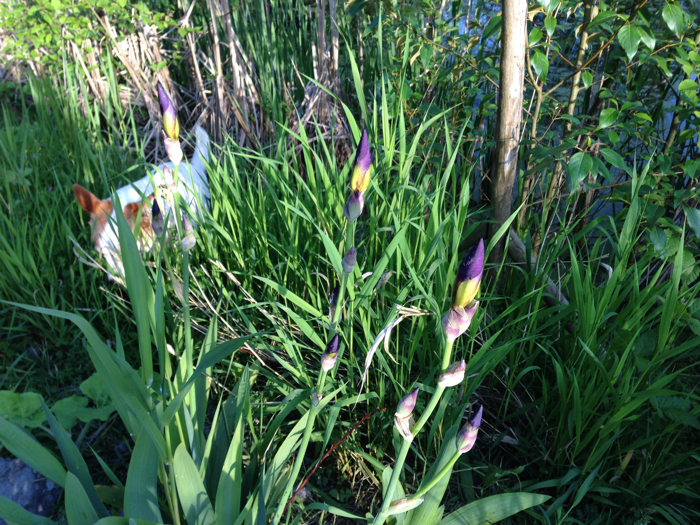
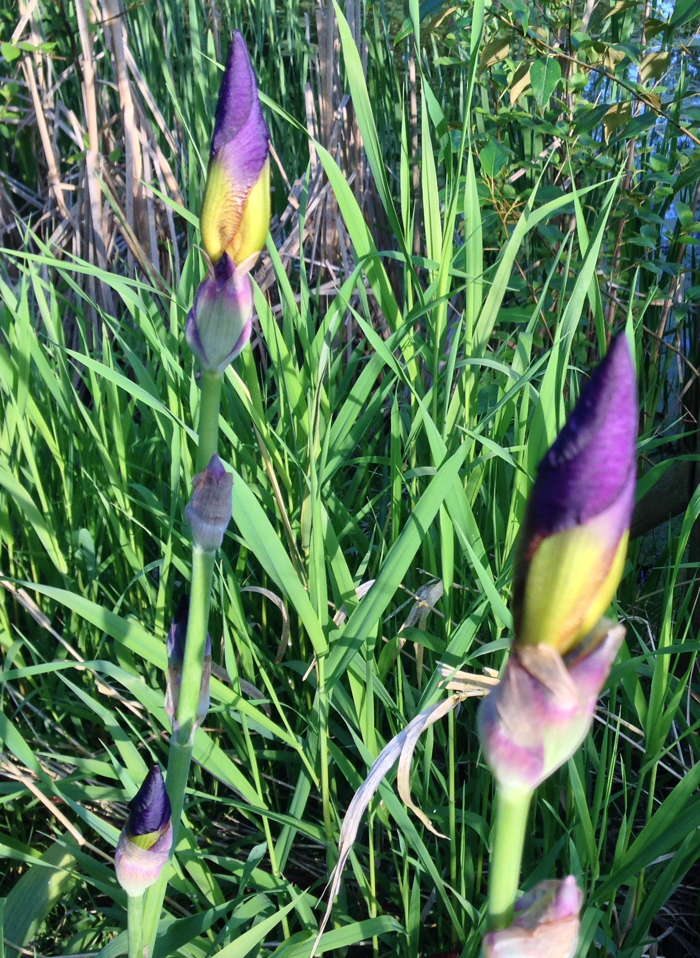
Author: theMan
-
Iris on the Verge
-
Bring Out the Cannon to Shoot the Sparrows
Curious as to the sculptor and the actual sculpture I saw at the Hakone Open-Air Museum back in my college days, I sent a query to the museum describing the sculpture. A short time ago I got a reply from the museum. The sculpture is now at their sister open-air museum, The Utuskushigahara Open-Air Museum in Nagano prefecture in Japan. The links are in Japanese, but they have plenty of pictures to give you an idea of the beautiful, mountainous area. Below is a picture of that sculpture.
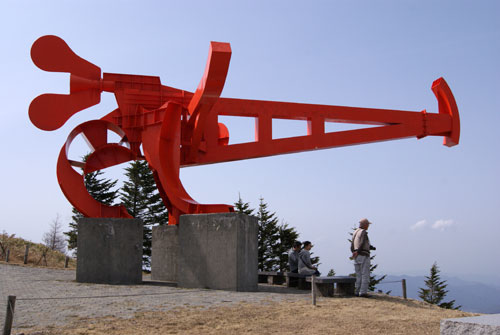
The sculpture is by the Swiss artist Bernhard Luginbühl and is titled スズメヲウツノニタイホウヲモチダス Suzume wo utsu noni taihou wo mochidasu, which translates to Bring out the cannon to shoot the sparrow. He created many huge, fantastical pieces. Take a look at the Iron Giants’ Garden, a park in Mötschwil, canton Bern, Switzerland, that has a collection of his work. And below are images of some of his works. The world has an endless supply of interesting, creative people.
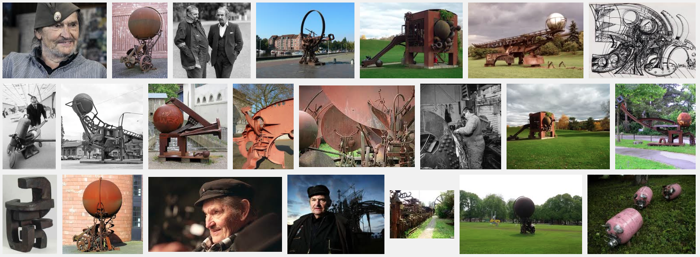
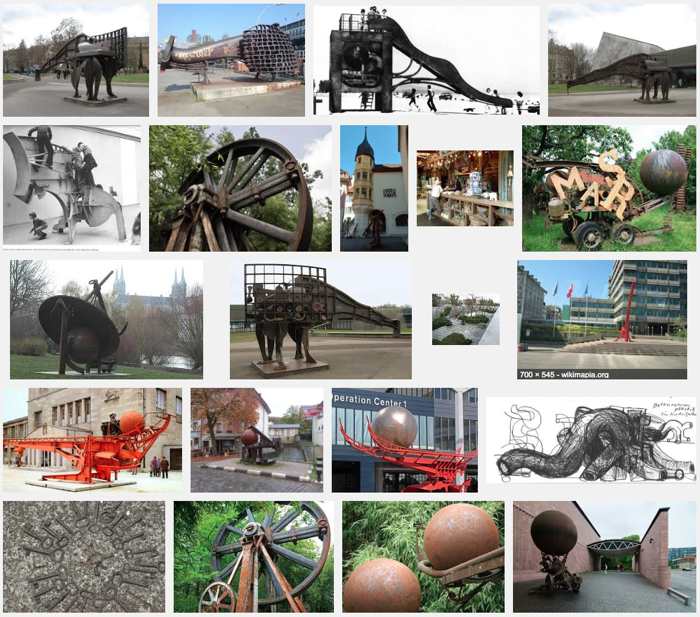
-
On Mother’s Day
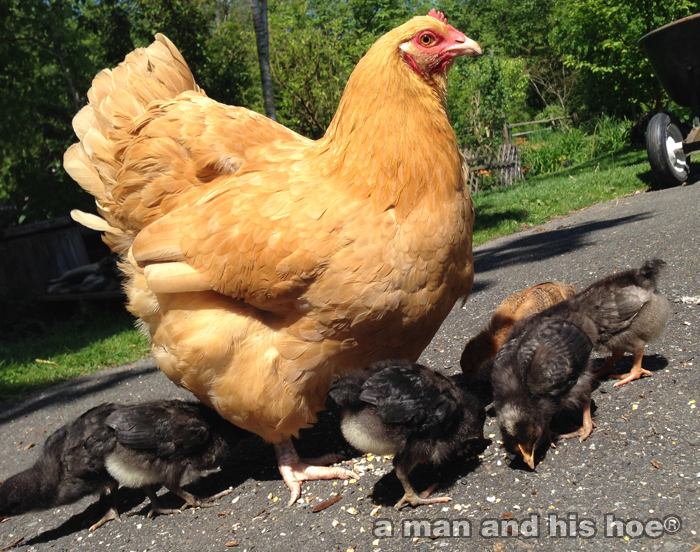
This is a tribute to the 99.999999999999% of chicks who don’t have a mother. Who are hatched in mechanical incubators, rushed to broilers and laying barns, and grow up never spending a night snuggled under a mother’s warm feathers.
This is a tribute to the 99.999999999999% of laying hens who never get to hatch a single one of the many hundreds of eggs they lay. Who never get to express their love for little chicks.
A melodramatic, sentimental tribute, and yet, perhaps the fact that we don’t even stop to consider that chicks do need a mother, and think it quaint that there are still places that have mother hens raising chicks, speaks more about what has happened to us humans than anything.
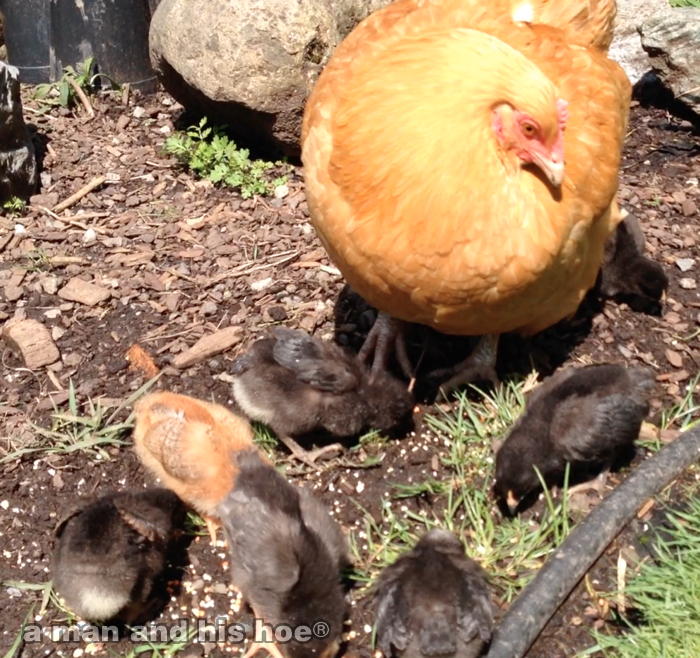
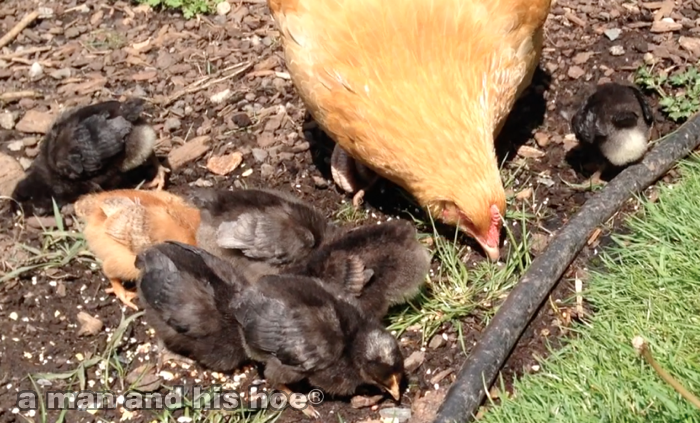
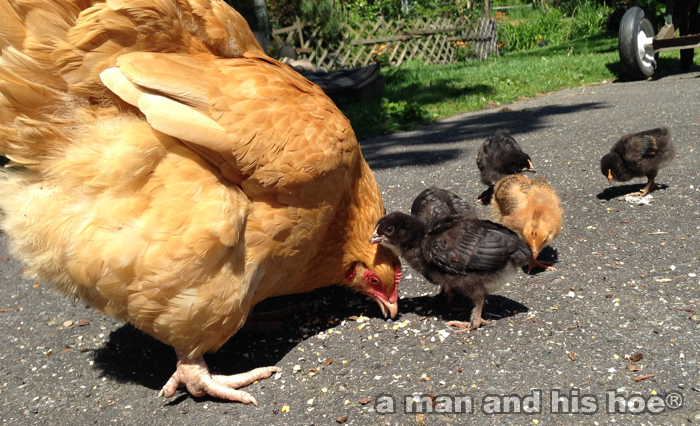
A mother hen teaches the chicks manners. She teaches them to be confident in the presence of other hens, and to mingle with the rest of the flock.
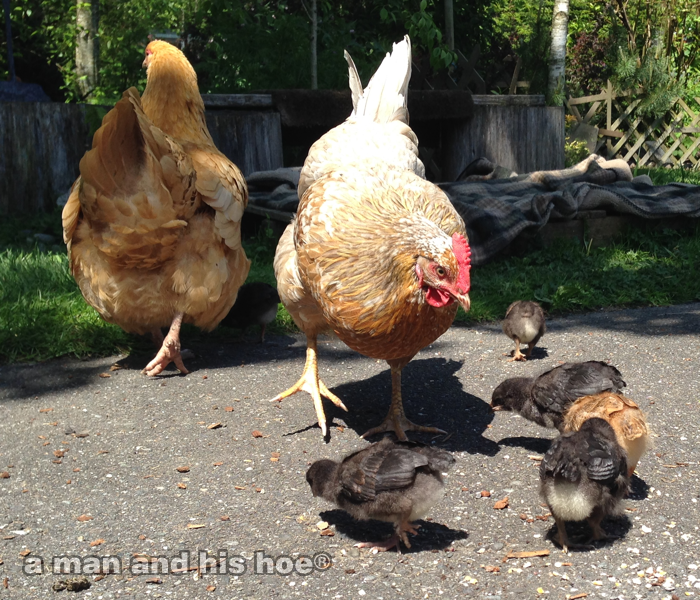
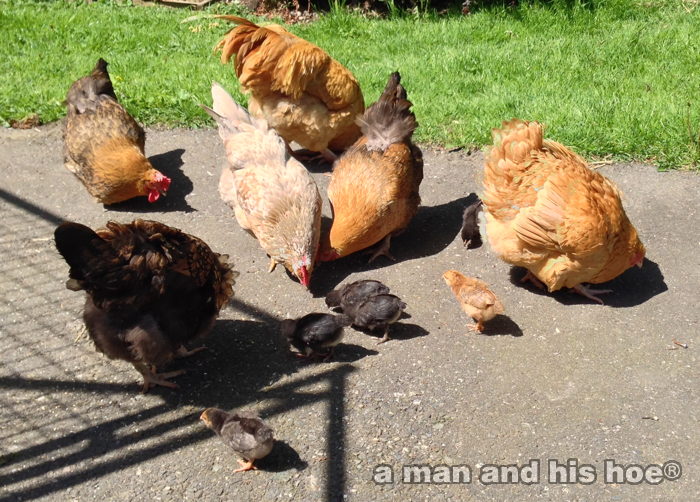
Happy Mother’s Day! The chicks who have mothers sure adore them.
[wpvideo zHVGsckg] -
Mornings Start Early
Mornings start early for the roosters. They start crowing at the crack of dawn.
[wpvideo K38coF0m]
Mornings start early for a mother hen and her chicks. They are often the first ones out of the chicken yard. Often it is the little ones that are most anxious to get outdoors.
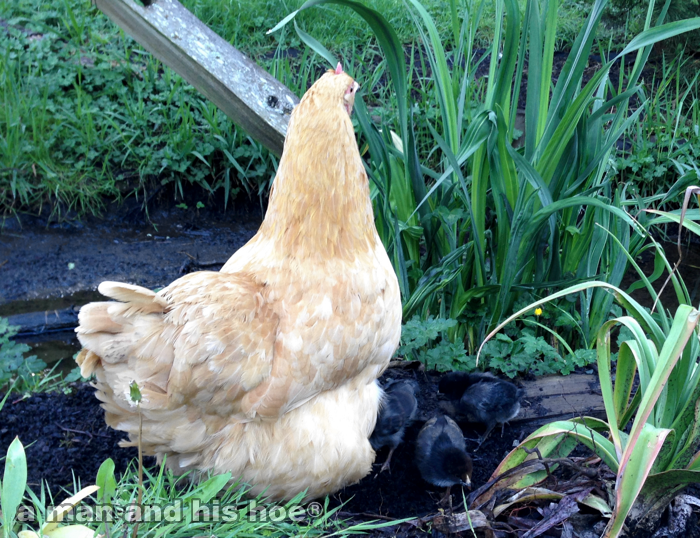
It’s a different story with these chicks. Last night their mother was back up on the roost and the four chicks spent their first night without her. This morning they are glad to have her back, though now that she is roosting again, it won’t be long before they will be on their own for good.
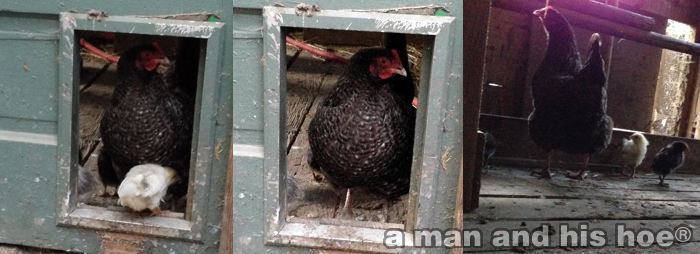
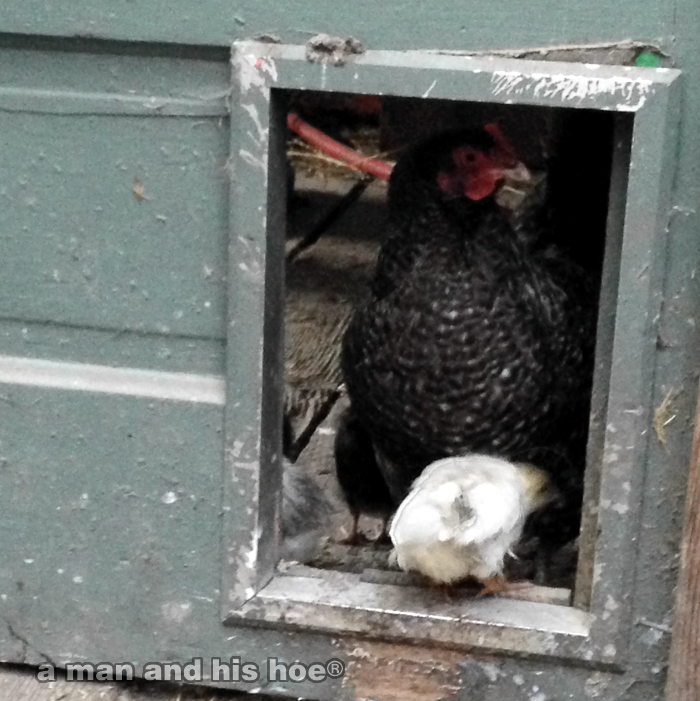
And a pleasant surprise this morning was finding a young hen laying her first egg.
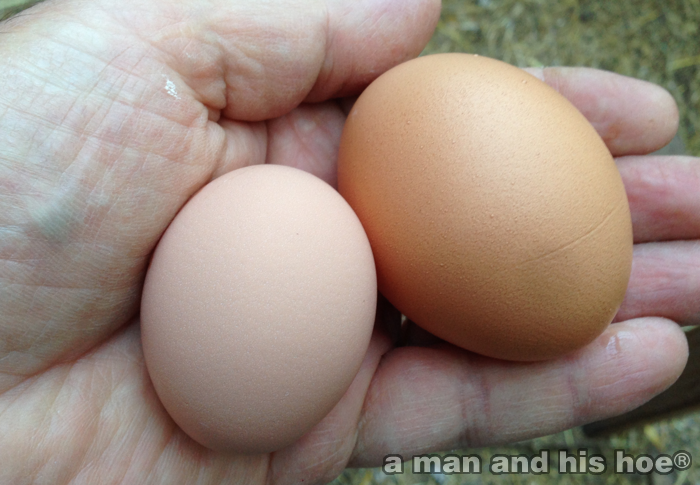
-
On the Board Today – May 10, 2014
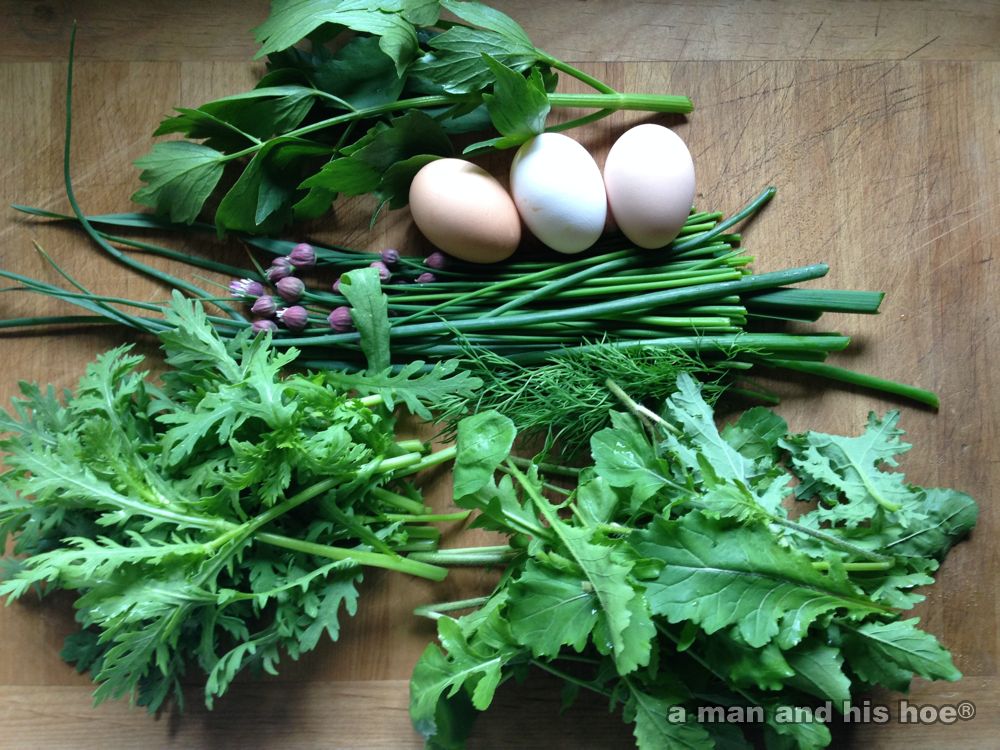
On the cutting board today for lunch: lovage, eggs, chives, dill, arugula, shungiku (spring chrysanthemums). Half the fun of making and eating lunch is gathering the ingredients from the garden.